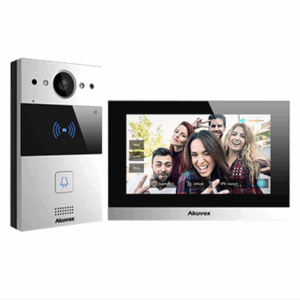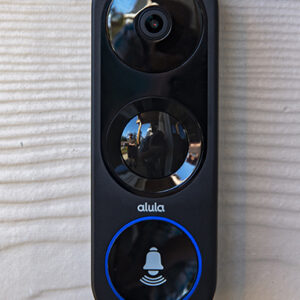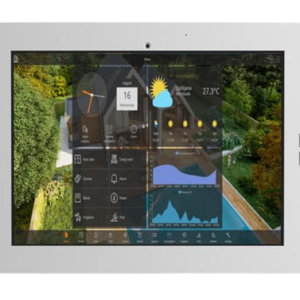In the realm of communication technology, two-way intercom systems stand out as versatile tools for facilitating seamless interaction across various environments. From residential applications to commercial settings and beyond, these systems enable real-time audio communication between different locations, enhancing convenience, security, and operational efficiency. This comprehensive guide explores the features, benefits, applications, installation considerations, and future trends of two-way intercom systems.
Table of Contents
ToggleWhat is Two-Way Intercom System?
A two-way intercom system is a communication device that allows two or more parties to converse with each other simultaneously. Unlike traditional one-way intercoms, which allow communication in only one direction (such as from a central station to remote locations), two-way intercoms enable full duplex communication. This means participants can speak and listen at the same time, mimicking natural conversation dynamics.
Two-way intercom systems are available in various configurations, including wired and wireless options. They can be integrated with other security and communication systems, offering enhanced functionality and flexibility in diverse environments.
Evolution and Development of Two-Way Intercom Systems
Two-way intercom systems have evolved significantly since their inception, driven by advancements in communication technology and the increasing demand for efficient and reliable communication solutions. Originally used primarily for residential door communication and security purposes, these systems have expanded to encompass a wide range of applications across different sectors.
Early two-way intercom systems relied on analog technology, which transmitted audio signals over electrical wires. With the advent of digital technology, intercom systems became more sophisticated, offering clearer audio quality, better security features, and compatibility with modern communication networks.
Today, two-way intercom systems leverage digital protocols such as IP (Internet Protocol), enabling integration with VoIP (Voice over IP) networks and cloud-based communication platforms. This integration enhances scalability, remote management capabilities, and interoperability with other smart devices and systems.
Read more: Enhancing Business Security with Video Intercom SystemsExploring Two-Way Intercom Systems Technology
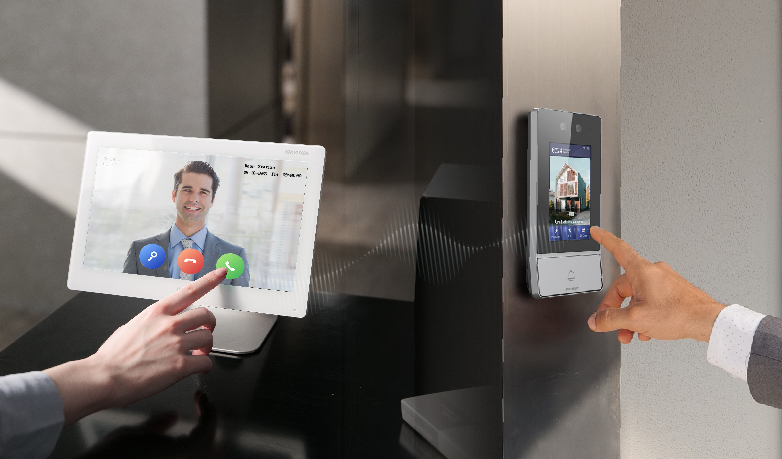
Two-way intercom systems have evolved significantly over the years, offering a range of wired and wireless options that cater to diverse communication needs. These systems employ various technologies, each bringing distinct features and advantages. Let’s delve into the technology underpinning these systems, focusing on 4-wire, 2-wire, and IP intercom systems.
4-Wire Intercom Systems
A 4-wire intercom system belongs to the category of wired intercoms utilizing separate wires for audio transmission and reception. This configuration enables full-duplex communication, allowing both parties to speak and listen simultaneously, akin to a telephone conversation.
The hallmark of 4-wire systems lies in their superior audio quality and reliability. They are less prone to interference and offer a stable connection, making them ideal for environments where clear communication is crucial. However, their installation process tends to be more complex and time-consuming due to the need for additional wiring.
2-Wire Intercom Systems
In contrast, 2-wire intercom systems utilize a single wire for both audio transmission and reception. Operating on a half-duplex communication mode, these systems enable only one party to speak at a time while the other listens, resembling the functionality of walkie-talkies.
The primary advantage of 2-wire systems lies in their simplicity of installation. With fewer wires to manage, these systems are quicker and easier to install compared to 4-wire alternatives. However, they may not achieve the same level of audio quality and simultaneous communication capability as 4-wire systems.
IP Intercom Systems
IP intercom systems are at the forefront of intercom technology advancements. These systems utilize a network connection, whether wired or wireless, to transmit audio and video signals over the internet. This capability enables communication between devices irrespective of their physical locations, as long as they are connected to the internet.
The benefits of IP intercom systems are numerous. They include superior audio and video quality, scalability, and seamless integration with other IP-based systems. These systems support full-duplex communication, allowing simultaneous speaking and listening, and they can be accessed remotely via smartphones or computers.
Wireless Intercom Systems
Wireless intercom systems have gained popularity due to their convenience and straightforward installation process. Unlike their wired counterparts, these systems do not require physical connections between intercom units, making them ideal for environments where wiring is impractical or impossible.
These systems operate using various wireless technologies to transmit and receive signals:
- Radio Frequency (RF) Intercoms: RF intercoms transmit audio signals over radio waves. They are easy to install but may have limited range and susceptibility to interference from other electronic devices.
- Wi-Fi Intercoms: Wi-Fi intercoms utilize the existing Wi-Fi network of homes or businesses to transmit audio and video signals. They offer wide coverage and high-quality audio and video, contingent on a stable Wi-Fi connection.
- DECT Intercoms: DECT (Digital Enhanced Cordless Telecommunications) intercoms operate on a dedicated frequency, reducing interference and ensuring clearer audio. However, they typically have a shorter range compared to Wi-Fi intercoms.
- Bluetooth Intercoms: Bluetooth intercoms connect intercom units using Bluetooth technology, suitable for short-range applications within a single building or vehicle.
Each type of wireless intercom system has its unique communication mode, audio quality, installation complexity, geographical flexibility, and dependency on specific technologies. The choice between these systems should consider factors such as range requirements, susceptibility to interference, and reliance on existing network infrastructure.
The chart below provides a quick comparison of different intercom systems:
| Intercom Type | Communication Mode | Audio Quality | Installation Complexity | Geographical Flexibility | Dependency |
|---|---|---|---|---|---|
| 4-Wire Systems | Full-Duplex | High | High | Limited to wiring | None |
| 2-Wire Systems | Half-Duplex | Moderate | Low | Limited to wiring | None |
| IP Systems | Full-Duplex | High | Moderate | Unlimited (Internet req) | None |
| RF Wireless | Depends on model | Varies | Low | Limited by signal range | None |
| Wi-Fi Wireless | Full-Duplex | High | Low | Limited by Wi-Fi range | Wi-Fi Connection |
| DECT Wireless | Full-Duplex | High | Low | Limited by DECT range | None |
| Bluetooth Wireless | Full-Duplex | Moderate | Low | Limited by Bluetooth range | None |
This comparison serves as a guide, but individual performance can vary based on specific models and brands. Always assess your unique requirements and circumstances when selecting a wireless intercom system to ensure it meets your communication needs effectively.
Features to Evaluate When Selecting a Two-Way Intercom System
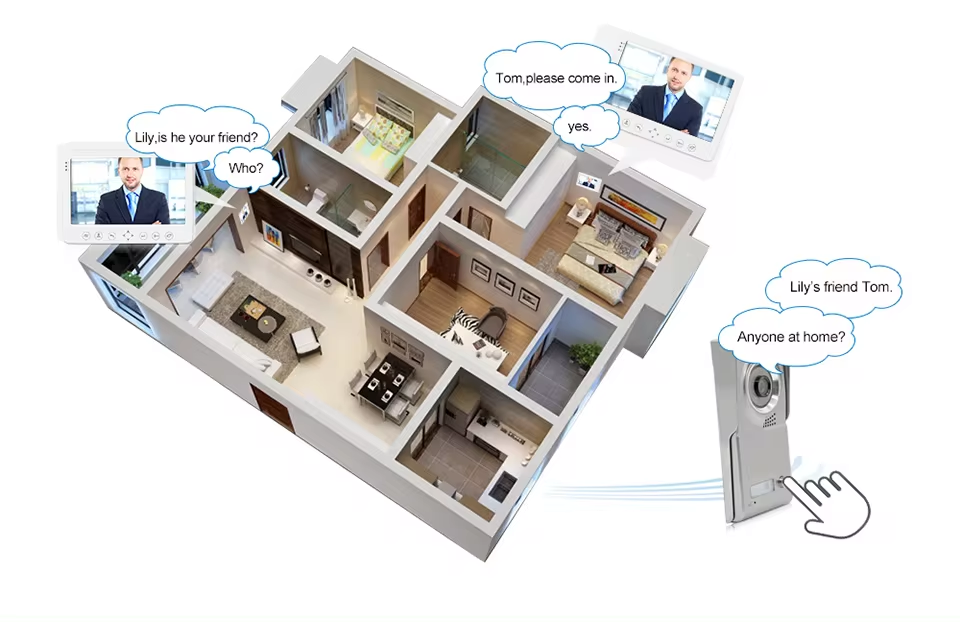 Choosing the perfect two-way intercom system can seem overwhelming due to the array of options available. However, by carefully considering key features, you can confidently select a system that meets your requirements. Below are essential features to evaluate when choosing a two-way intercom system:
Choosing the perfect two-way intercom system can seem overwhelming due to the array of options available. However, by carefully considering key features, you can confidently select a system that meets your requirements. Below are essential features to evaluate when choosing a two-way intercom system:
Range
The range of the intercom system is critical, particularly for wireless models. It determines the distance over which intercom units can communicate clearly. For extensive properties or installations where units are placed far apart, opt for systems with extended range capabilities.Audio and Video Quality
Ensure the system offers superior audio and video transmission quality. Clear audio is essential to prevent misunderstandings, while high-definition video enhances visibility. Choose systems that prioritize both aspects for optimal communication effectiveness.Installation and User-Friendliness
Consider the installation complexity of the intercom system. Some systems require professional installation, while others are designed for straightforward DIY setup. Evaluate your technical comfort level and budget for installation costs accordingly. Additionally, prioritize systems with intuitive controls and user-friendly interfaces for ease of use.Power Source
Different intercom systems utilize varied power sources. Some rely on traditional power outlets, while others operate on batteries for increased flexibility. Assess the availability of power sources at installation locations to determine the most suitable option.Durability and Weather Resistance
For outdoor installations, prioritize intercom units with robust durability and weather-resistant features. These should withstand diverse weather conditions such as rain, snow, and extreme temperatures to ensure long-term reliability.Integration with Other Devices
Advanced intercom systems offer integration capabilities with smartphones and other devices. This feature allows remote access, call reception, and property monitoring from any location. Verify compatibility with your existing technology ecosystem if seamless integration is a priority.Security Features
If using the intercom system for access control, prioritize models equipped with robust security features. Features such as video recording, motion detection, and night vision enhance property security and monitoring capabilities. By carefully assessing these features, you can select a two-way intercom system that not only meets your immediate communication needs but also integrates seamlessly into your overall security and operational setup.Benefits of Two-Way Intercom Systems

1. Real-Time Communication
The primary benefit of two-way intercom systems is their ability to facilitate real-time communication between different locations or individuals. Whether used for internal communication within a building, visitor screening at entry points, or emergency announcements, these systems enable instant and efficient interaction.
2. Enhanced Security
Two-way intercom systems enhance security by allowing personnel to verify visitors’ identities before granting access to a premises. This is particularly valuable in residential complexes, commercial buildings, and educational institutions where controlled access and visitor management are crucial for safety.
3. Operational Efficiency
In commercial and industrial settings, two-way intercom systems improve operational efficiency by facilitating quick communication between departments, workstations, and control centers. They streamline workflow processes, coordinate tasks, and respond promptly to emergencies or operational changes.
4. Flexibility and Scalability
Modern two-way intercom systems offer flexibility in installation and scalability. Wireless systems, in particular, can be easily deployed and expanded to accommodate changing organizational needs or building layouts. This flexibility makes them suitable for buildings of varying sizes and configurations.
5. Integration with Other Systems
Two-way intercom systems can integrate seamlessly with other security and communication systems, such as access control, CCTV cameras, and alarm systems. Integration enhances overall security measures and enables centralized monitoring and management of multiple systems from a single platform.
Applications of Two-Way Intercom Systems
Two-way intercom systems find application across various sectors and environments:
Residential Use
In homes, two-way intercom systems facilitate communication between different rooms, entry points, and external gates. They provide homeowners with the ability to communicate with visitors and monitor activities remotely, enhancing security and convenience.
Commercial Buildings
In offices, retail stores, and commercial complexes, two-way intercom systems support internal communication among staff members, reception areas, and security personnel. They enable efficient management of visitor access and enhance customer service by enabling direct communication with customers or clients.
Educational Institutions
Schools, colleges, and universities utilize two-way intercom systems for campus-wide announcements, emergency notifications, and coordination between administrative offices and classrooms. These systems contribute to campus safety and facilitate efficient communication during drills or critical incidents.
Healthcare Facilities
Hospitals, clinics, and healthcare centers use two-way intercom systems to improve communication between medical staff, patient rooms, and administrative offices. They support effective patient care coordination, emergency response protocols, and operational efficiency.
Industrial Sites
In manufacturing plants, warehouses, and industrial facilities, two-way intercom systems enable communication between control rooms, production areas, and maintenance teams. They facilitate operational safety, process monitoring, and rapid response to equipment failures or emergencies.
Installation Considerations for Two-Way Intercom Systems
Environment and Coverage Area
Evaluate the size and layout of the property to determine the number and placement of intercom units. Consider factors such as building materials, potential sources of interference, and the required coverage area for reliable communication.
Power Supply and Backup
Ensure adequate power supply for intercom units, especially in critical areas where continuous operation is essential. Consider battery backup or alternative power sources to maintain functionality during power outages.
Network Infrastructure
For IP-based two-way intercom systems, assess the existing network infrastructure to ensure sufficient bandwidth and reliability. Conduct a network assessment to identify potential bottlenecks or areas requiring network upgrades.
Security Features
Select intercom systems with robust security features, such as encrypted communication channels, secure authentication protocols, and remote access control. These features safeguard communication against unauthorized access or interception.
Maintaining Your Two-Way Intercom System
- Regular Inspections: Conduct periodic inspections to check for any physical damage, loose connections, or signs of wear. This helps identify potential issues early.
- Cleaning: Keep the intercom units clean from dust and debris, especially around microphones, speakers, and camera lenses. Use a soft, dry cloth to wipe surfaces gently.
- Testing: Regularly test the audio and video quality, as well as the functionality of buttons and controls. Verify that all features, such as remote access and integration with other devices, are working correctly.
- Software Updates: If your intercom system includes software or firmware, ensure it is up to date. Install updates provided by the manufacturer to benefit from improved performance and security patches.
- Battery Check (if applicable): If your intercom units are battery-powered, monitor battery levels regularly and replace batteries as needed to avoid interruptions in operation.
- Weather Protection: If any units are installed outdoors, ensure they are adequately protected from the elements. Use weatherproof covers or enclosures where necessary to prevent damage from rain, snow, or extreme temperatures.
- Professional Maintenance: Consider scheduling regular maintenance with a qualified technician, especially for complex systems or those integrated with security features. They can perform detailed checks and adjustments to optimize performance.
Conclusion
Two-way intercom systems play a crucial role in enhancing communication, security, and operational efficiency across residential, commercial, educational, and industrial environments. By facilitating real-time audio communication between different locations, these systems support seamless interaction, emergency response protocols, and visitor management. As technology continues to evolve, two-way intercom systems will evolve to incorporate advanced features, integration capabilities, and enhanced user experiences. Understanding the features, benefits, applications, and installation considerations of two-way intercom systems is essential for businesses, homeowners, and institutions seeking to implement effective communication solutions for their specific needs.
-
Akuvox Video Doorbell E12S Powerful Secure Features
$222.73 (ex. GST)Please login to see trade price
Add to cart -
-
-


